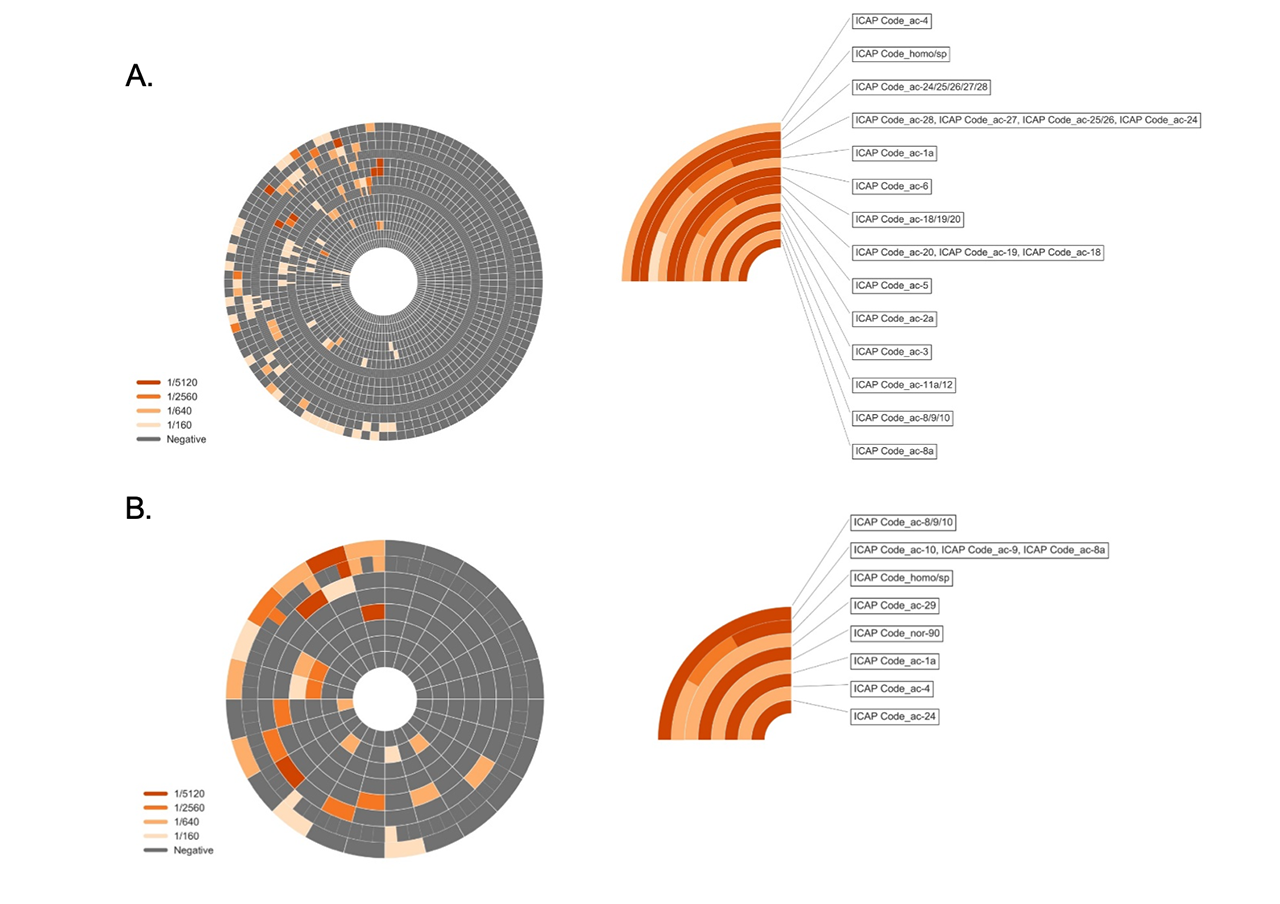Session Information
Date: Sunday, November 10, 2019
Title: Pediatric Rheumatology – ePoster I: Basic Science, Biomarkers, & Sclerodermic Fever
Session Type: Poster Session (Sunday)
Session Time: 9:00AM-11:00AM
Background/Purpose: It has become increasingly recognized that extra-cutaneous manifestations, such as musculoskeletal and neurologic involvement, are common in pediatric patients with localized scleroderma (LS). We previously demonstrated that the presence of certain autoantibodies (Aab) is associated with deep tissue and internal organ involvement compared to pediatric healthy controls. In this study, a wider screening Aab array was used in a study to compare pediatric LS to pediatric systemic sclerosis (SSc).
Methods: A total of 133 pediatric patients (n=109 LS and 24 SSc) were included. Sera was tested for antinuclear antibodies (ANA) using indirect immunofluorescence (IIF) on HEp-2 cells (Inova Diagnostics, San Diego, CA) where a titre of equal to or greater than 1/80 was considered to be positive. Circular heat maps were generated to compare the frequency of ANA patterns in each group. The international consensus on ANA patterns (ICAP, www.anapatterns.org) nomenclature was used to denote ANA IIF pattern nomenclature.
Results: A total of 59/109 (54%) LS patients and 16/24 (67%) SSc patients were ANA positive. LS had the greatest number of distinct ANA patterns (n=11) compared to SSc (n=7) (Figure 1). AC-4 (nuclear speckled) was the most common pattern (23/109, 21%) while AC-8/9/10 (nucleolar) was the least common in LS (2/109, 2%). The opposite was true for SSc where AC-8/9/10 (9/24, 38%) was the most common and AC-4 was uncommon (3/24, 13%). Other ANA IIF patterns such as AC-2 (dense fine speckles) (4/109, 4%) and AC-24 (centrosome) (8/109, 7%) were seen in LS, but was absent or rare in SSc.
Conclusion: Pediatric SSc had higher frequency of ANA positivity compared to pediatric LS, as clinically expected, but not by a high margin. Interestingly, patients with LS had more heterogeneous expression of ANA patterns, including patterns that are rarely seen in SSc such as AC-24 (centrosome). Furthermore, since the centrosome is in the cytoplasm, the centrosome pattern would not be reported by laboratories that only report nuclear IIF patterns as a positive ANA. Therefore, an ANA test that includes nuclear, cytoplasmic, and mitotic patterns should be considered as the screening test in patients with scleroderma, especially LS.
To cite this abstract in AMA style:
Choi M, Mirizio E, Quinteros F, Buhler K, Fritzler M, Torok K. Closing the Seronegative Gap in Pediatric Localized Scleroderma and Systemic Sclerosis [abstract]. Arthritis Rheumatol. 2019; 71 (suppl 10). https://acrabstracts.org/abstract/closing-the-seronegative-gap-in-pediatric-localized-scleroderma-and-systemic-sclerosis/. Accessed .« Back to 2019 ACR/ARP Annual Meeting
ACR Meeting Abstracts - https://acrabstracts.org/abstract/closing-the-seronegative-gap-in-pediatric-localized-scleroderma-and-systemic-sclerosis/

